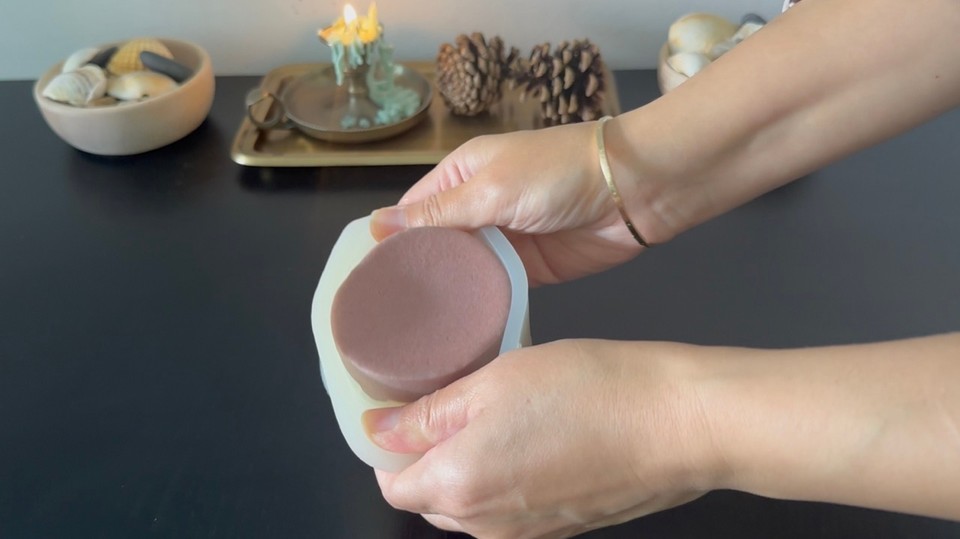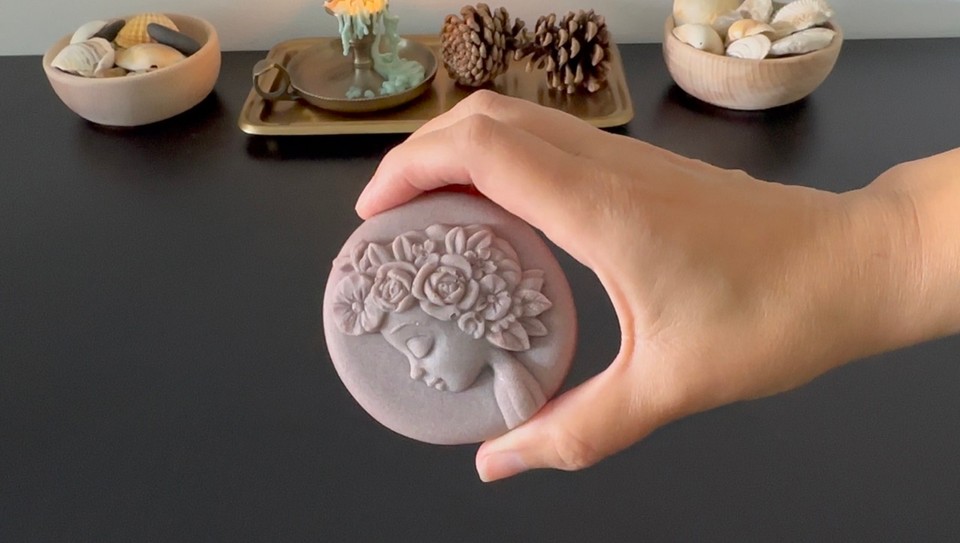Rice Solid Hair Conditioner
| Phase | Ingredient | Percent (%) | Weight (g) |
|---|---|---|---|
| Phase A | Distilled rice water | 9 | 9 |
| Guar gum | 0.4 | 0.4 | |
| Glycerin | 2 | 2 | |
| Phase B | BTMS25 | 34 | 34 |
| Cetyl alcohol | 19.6 | 19.6 | |
| Coconut oil | 6 | 6 | |
| Coco caprylate | 5 | 5 | |
| Jojoba wax (INCI - HYDROGENATED JOJOBA OIL) | 4 | 4 | |
| Fluid Lecithin (INCI - Phosphatidylcholine, Carthamus Tinctorius (Safflower) Seed Oil, Glycerin, Caprylic / Capric Triglyceride, Alcohol, Sunflower Seed Oil Glyceride, Soy Acid, Ascorbyl Palmitate, Tocopherol.) | 4 | 4 | |
| Stearic acid | 3 | 3 | |
| Rice starch | 5 | 5 | |
| Phase C | Citric acid | 2 | 2 |
| Rice water | 2 | 2 | |
| Sodium lactate | 2 | 2 | |
| Fragrance | 1.2 | 1.2 | |
| Preservative Cosgard (INCI - Benzyl Alcohol, Dehydroacetic Acid, Aqua) | 0.8 | 0.8 |
You can help support my website and channel through the “buy me a coffee” page.
Here is the link: https://www.buymeacoffee.com/diycosmetica
Your support helps me keep sharing here more information and more formulas.
This formula is for a rice solid conditioner. Why use rice water and starch in hair products? Rice water contains inositol, a carbohydrate that can penetrate the hair shaft and repair damaged hair. This helps reduce breakage and improve hair strength. The amino acids in rice water help strengthen hair strands, enhancing elasticity and reducing breakage. Rich in vitamins, especially B vitamins like niacin, rice water can stimulate scalp blood circulation, promoting healthy hair growth. Its natural starches smooth the hair cuticle, creating shinier hair. The smooth texture of rice water reduces friction between strands, making it easier to comb through and minimizing tangling. Packed with vitamins, minerals, and amino acids, rice water hydrates and nourishes the hair, leaving it softer and more manageable. Rice starch gives a light texture and coats the hair shaft, adding volume and body to fine or thin hair. It can also soothe the scalp, making it beneficial for sensitive skin. You can read more about the benefits of rice in hair products, here: https://onlinelibrary.wiley.com/doi/abs/10.1111/j.1468-2494.2010.00605_3.x https://pubmed.ncbi.nlm.nih.gov/35133117/
More solid conditioner formulas you might want to try are the Solid Silky Conditioner Bar, Solid Conditioner Bar Naturally Colored, and Solid Conditioner Bar For Damaged Hair. To incorporate rice water in this hair conditioner, I washed some rice with water (I washed the rice before soaking to remove any dirt and dust), added the rice to a beaker and covered it with distilled water to soak overnight in the fridge. I used one part of rice to 2 parts of distilled water. When I made the conditioner, I strained the rice and used the rice water in the formula.
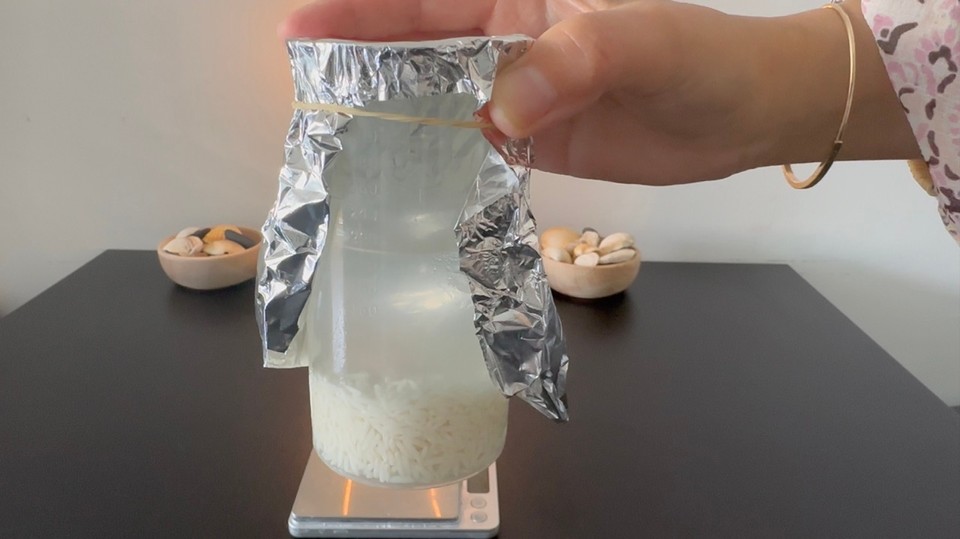
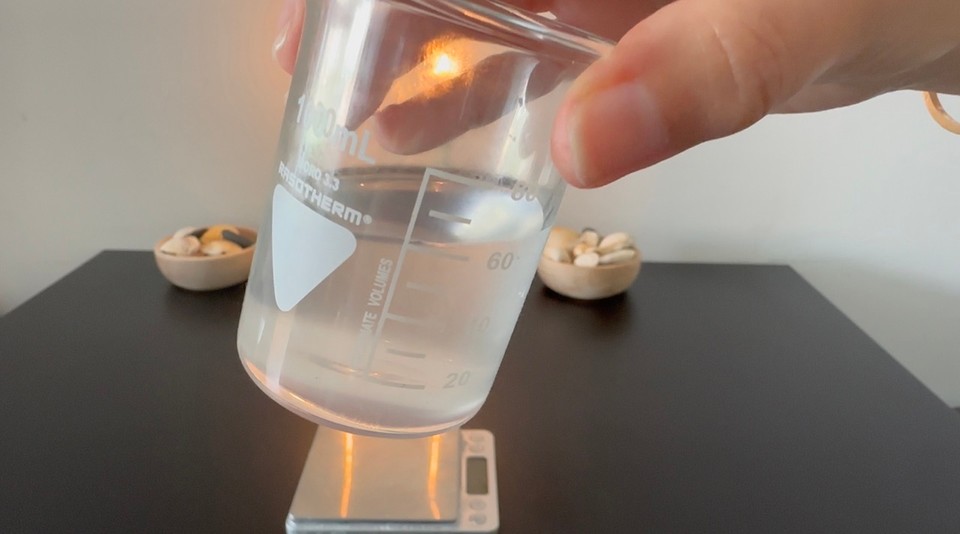
I used white rice, but you can also use brown rice. I also added cationic guar gum to this formula. Guar gum has conditioning properties and helps lock in moisture, preventing dryness and keeping the hair hydrated. It also creates a thin, protective film on the hair strands, protecting the hair against environmental damage and heat. Guar gum neutralizes static electricity in hair due to its cationic (positively charged) nature (It binds to the hair cuticle, neutralizing the negative charge and reducing static electricity). You can also use cationic Xanthan gum, a modified form of Xanthan gum derived from bacteria, or cationic Cassia Gum (Cassia Hydroxypropyltrimonium Chloride), which is derived from cassia seeds. In the oil phase (phase B), I used BTMS25 (Behentrimonium Methosulfate 25) with other emollients. BTMS is a cationic surfactant derived from colza oil (rapeseed oil). The cationic (positively charged) nature of Behentrimonium Methosulfate allows it to bind to negatively charged hair strands efficiently, offering excellent conditioning and detangling benefits. It reduces static electricity in the hair, minimizing frizz and flyaways. Additionally, it helps retain moisture in both hair and skin, promoting a hydrated, healthy appearance. Its gentle formulation makes it suitable for sensitive skin and frequent use. You can use BTMS50. BTMS25 contains 25% Behentrimonium Methosulfate (Balanced with fatty alcohols like Cetyl Alcohol and Butylene Glycol), while BTMS50 contains 50% Behentrimonium Methosulfate (also includes Cetyl Alcohol and Butylene Glycol). BTMS50 has stronger conditioning properties due to the higher concentration of Behentrimonium Methosulfate. So, if you want more conditioning properties, use BTMS50.

I used coconut oil, stearic acid, coco caprylate, lecithin, cetyl alcohol, and jojoba wax as emollients, along with BTMS25. Coconut oil is known for its deep moisturizing properties. It helps reduce protein loss in damaged and healthy hair, which is crucial for maintaining hair strength and elasticity. By sealing moisture inside the hair, coconut oil prevents dryness and reduces the occurrence of split ends. Stearic acid acts as an emollient, contributing to the bar's hardness. It coats the hair strands with a protective layer, smoothing the cuticle—the outer layer of hair strands. This smoothing effect helps prevent tangles and makes hair easier to comb. Coco caprylate is an effective alternative to silicones in hair care products. It provides essential lubrication without a heavy or greasy feel and enhances the hair's shine and softness. You can replace it with fractionated Coconut Oil, broccoli seed oil or Isoamyl laurate. Lecithin is a moisturizer and an emulsifier. It helps restore the hair's natural protective barrier, improving overall hair texture by making strands softer and more pliable. You can use regular lecithin. Cetyl alcohol is used for the silky texture that helps the bar glide on the hair and aids in detangling, allowing the conditioner to glide smoothly through the hair during application, which reduces breakage and facilitates more accessible and safer hair management. As a thickening agent in conditioners, cetyl alcohol helps soften the hair and enhance the spreadability of the product. You can replace the cetyl alcohol with Cetearyl Alcohol. Jojoba wax has excellent emollient properties, which help seal moisture into the hair shaft and reduce frizz. You can use berry wax or Myrica fruit wax instead. I used a citric acid solution made with rice water and sodium lactate as another humectant for phase C. You can replace the sodium lactate with panthenol, hydrolyzed wheat or silk protein.
If you are using another preservative, use it according to the supplier's instructions. If you need to adjust the formula, subtract or add from/to the sodium lactate to adjust the formula. Choose a preservative that can be added at higher temperatures.
I used a little mica powder to color my conditioner bar; this is optional, and you can leave the bar in its natural color. You can use the calculator to change the amount you wish to make.
Method:
- Prepare the rice water. Wash the rice to clean it, then add it to a container with double the amount of distilled water. Cover the container and place it in the fridge. The next day, strain the rice and keep the rice water in use for this formula.

- Mix guar gum and glycerin in a heat resistance beaker to create a slurry, then add the rice water and mix. Cover with aluminum foil and set aside.
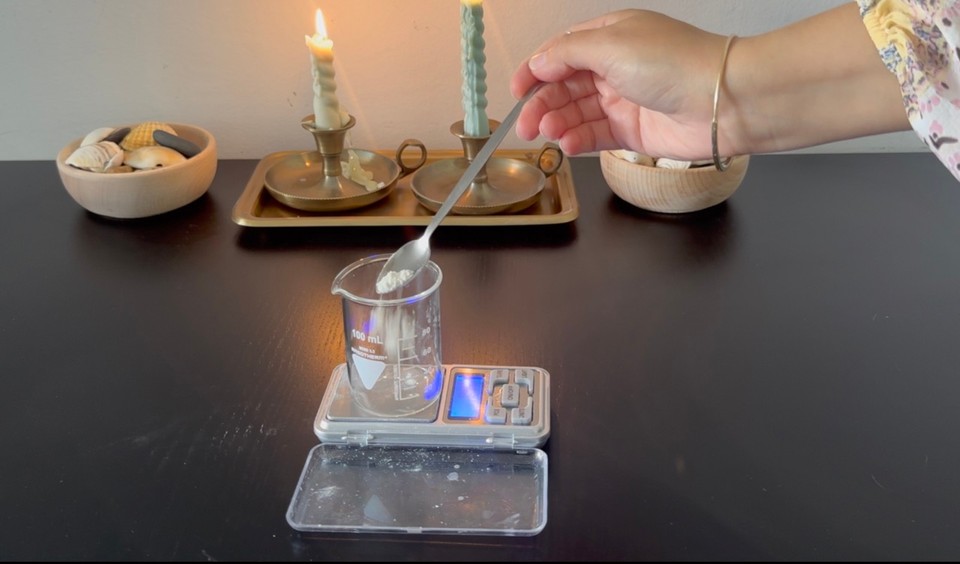
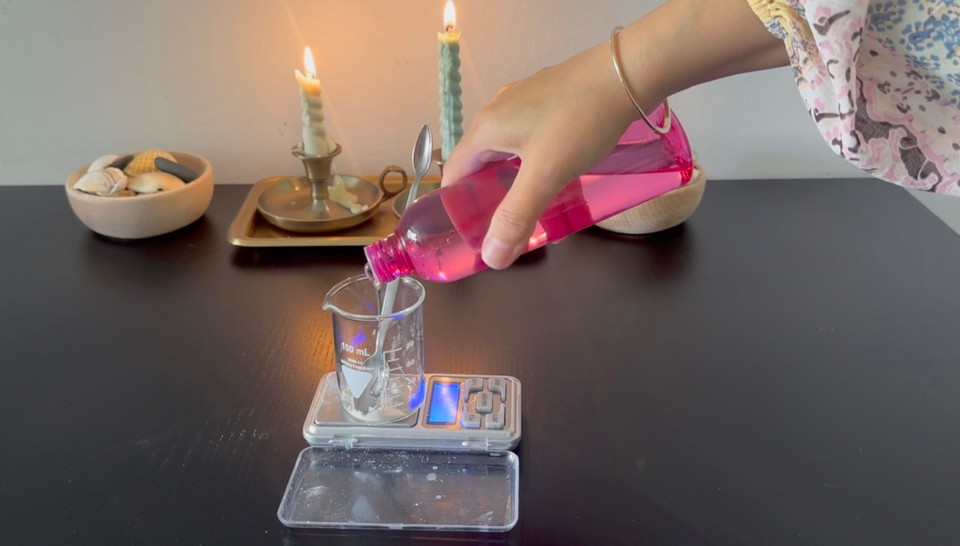
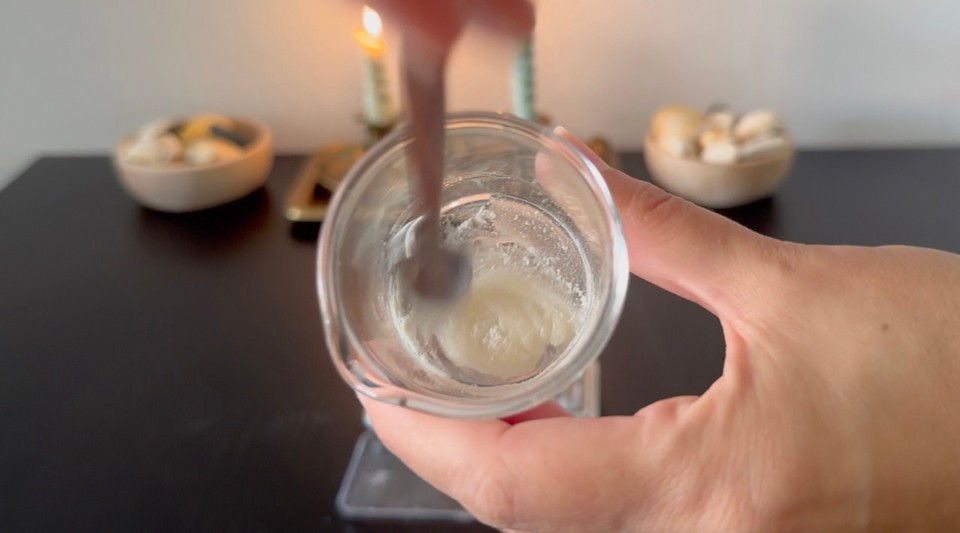
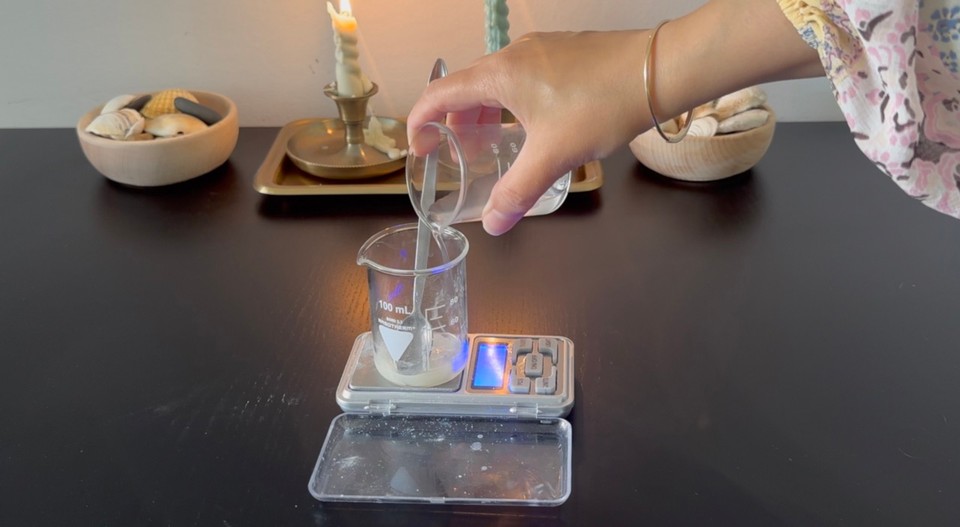
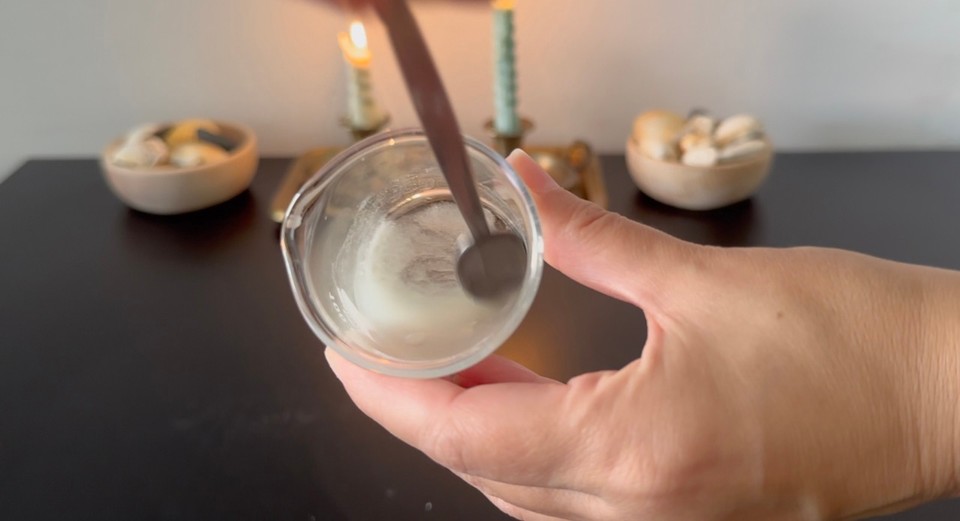

- In another heat resistance beaker, add phase B ingredients.

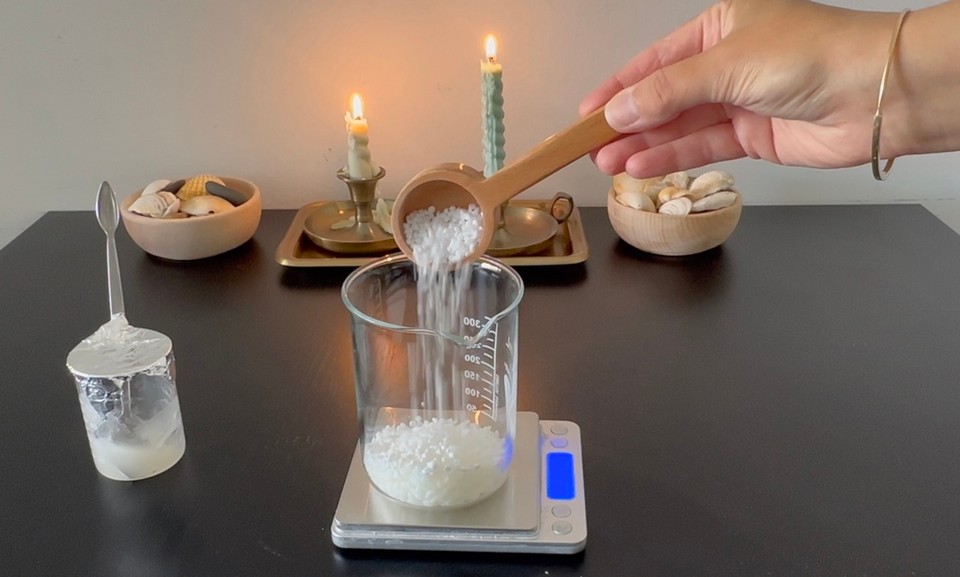
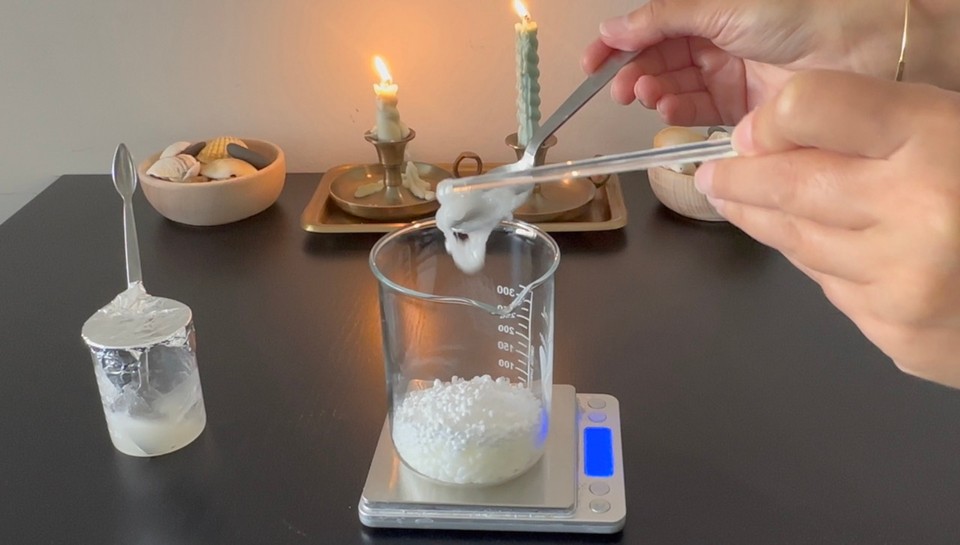
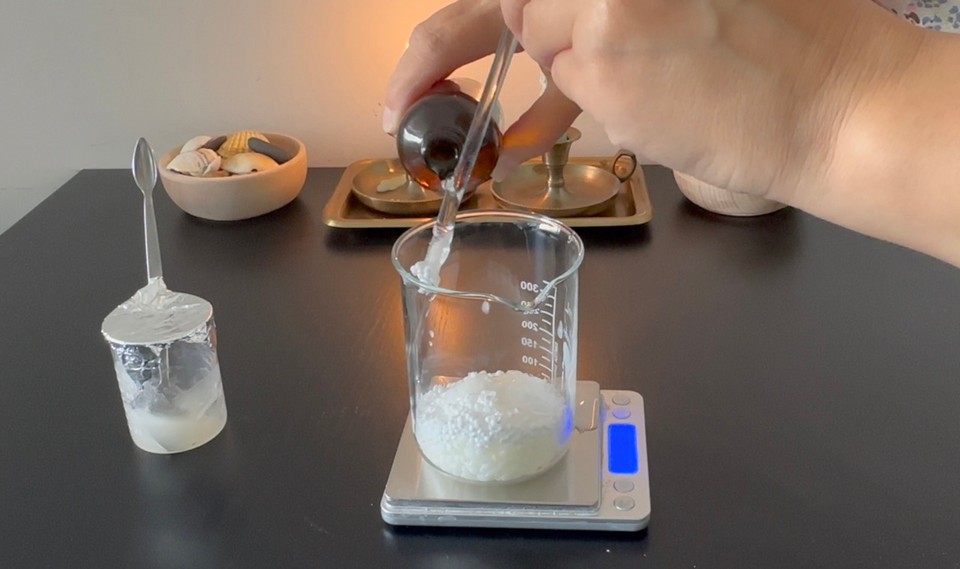
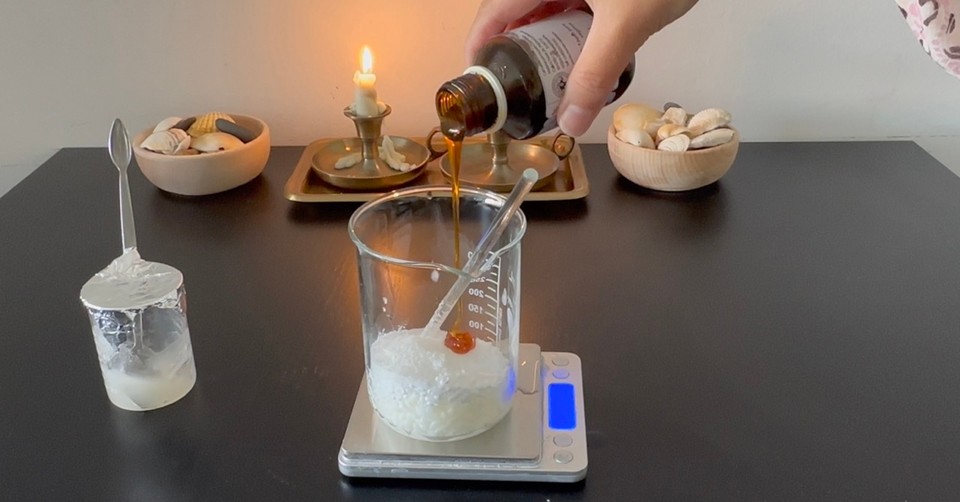

- Place phases A and B into a double boiler on medium heat for 30 minutes. Stir phase B every several minutes.
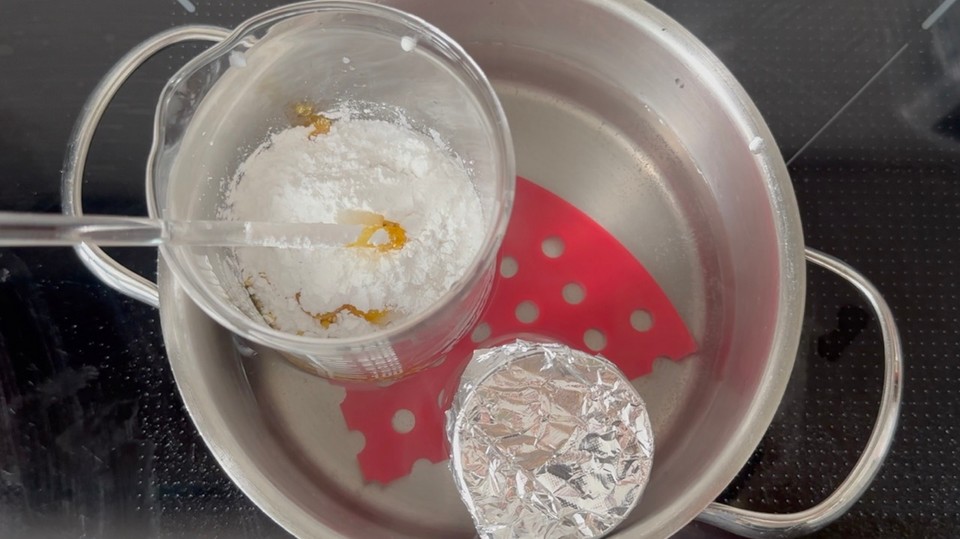
- Prepare phase C in a different container. Start by making a citric acid solution by mixing the citric acid powder with rice water; make sure the citric acid is dissolved before adding the rest of the ingredients.
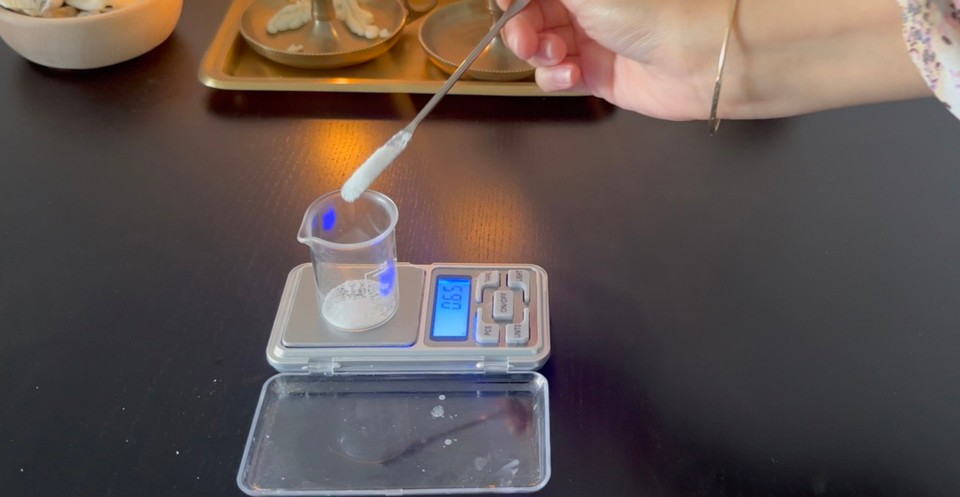
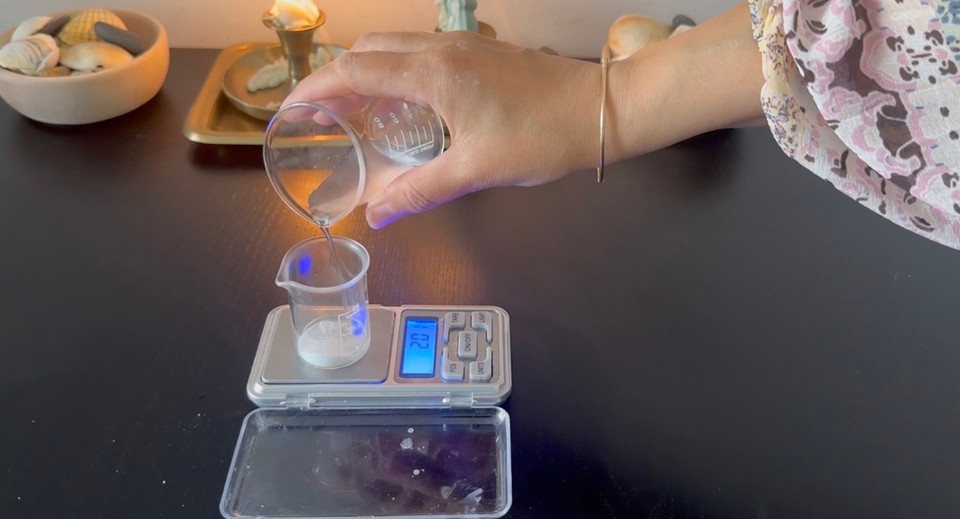

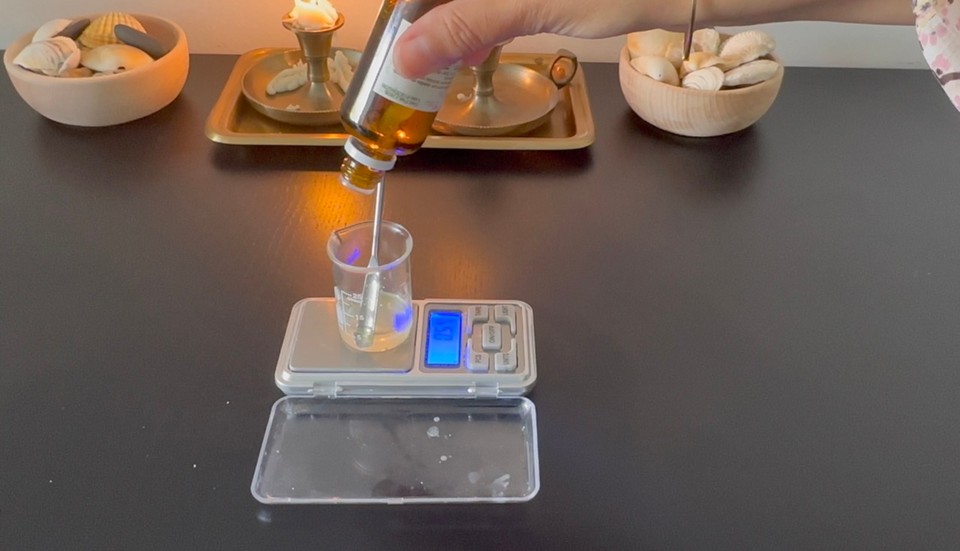
- While phases A and B are still inside the double boiler, lower the heat to low. Add phase A to phase B and mix with a high-speed blender to emulsify. Mix for 2 minutes.
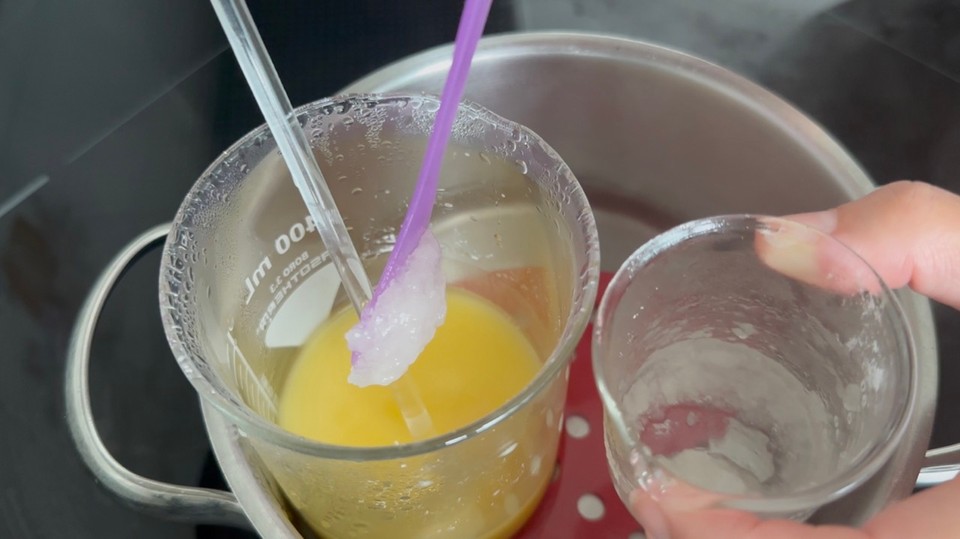
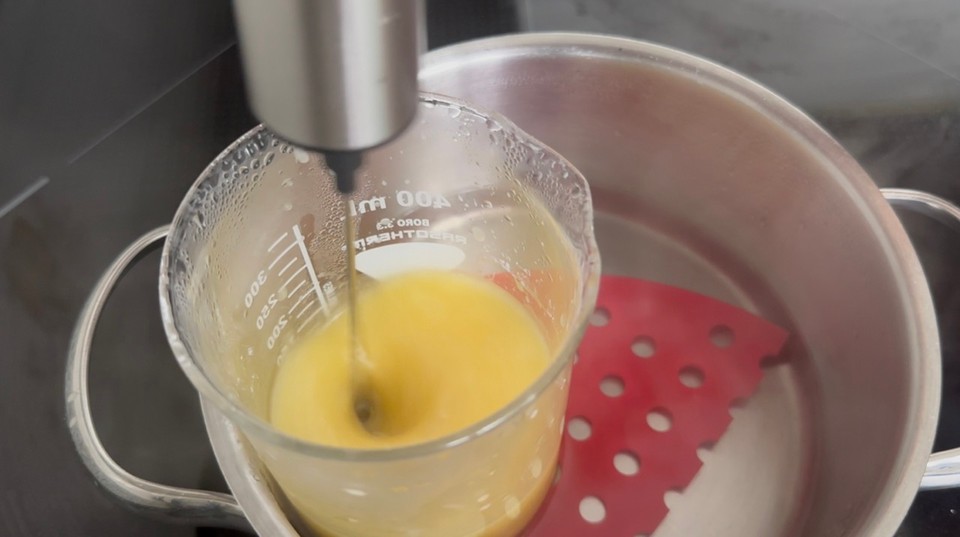
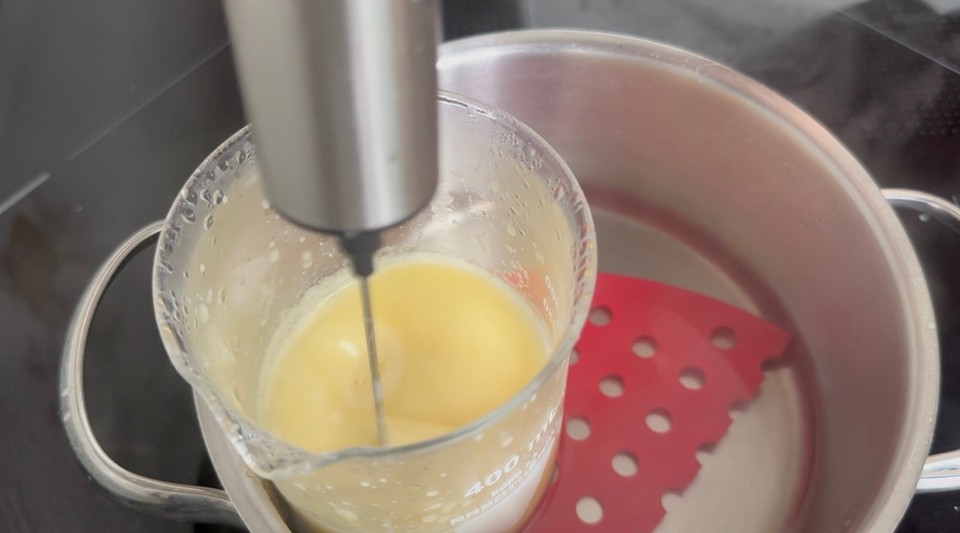
- If you want to add color, add it now and mix to combine.
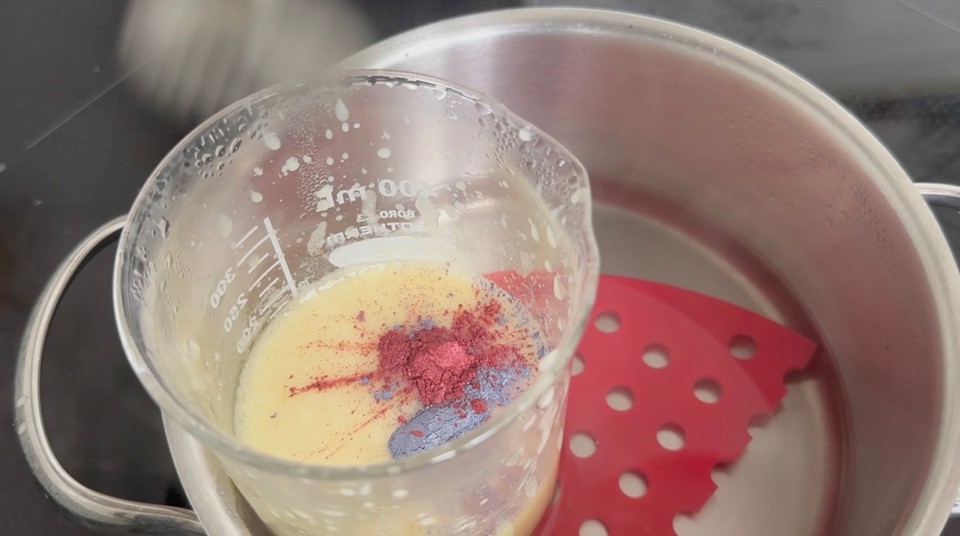

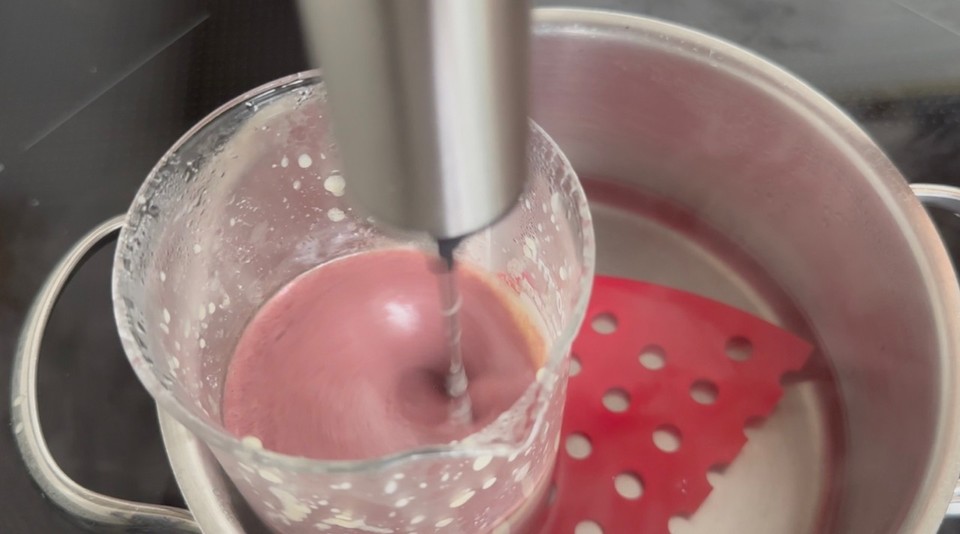
- Remove the beaker from the heat and add phase C. Mix to combine.
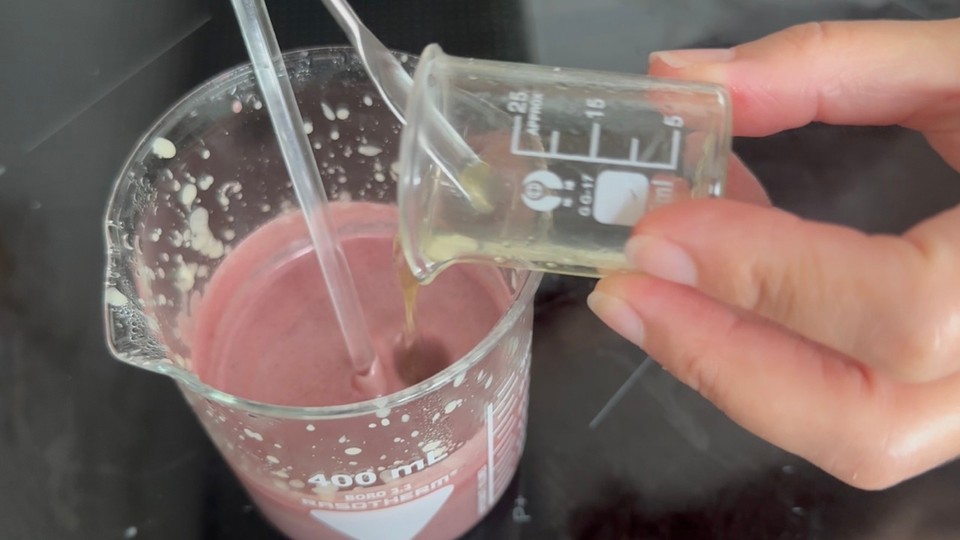

- Pour into a mold and leave it to cool down and solidify.

- Unmold the conditioner bar after it has cooled down and solidified.
